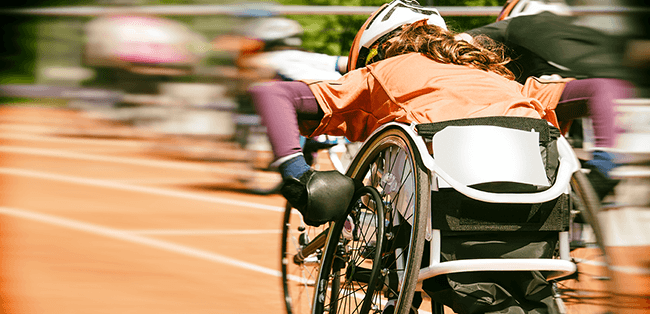In this blog post, we’re taking a look at a study that explores how respiratory resistance training (RRT) works towards strengthening inspiratory and expiratory muscle function in wheelchair-bound athletes in order to improve respiratory muscle function and exercise performance.
Key Findings
- Persons with spinal cord injury (SCI) have reduced respiratory function due to lower abdominal and chest wall strength and endurance, limiting their exercise capacity.
- 10 weeks of respiratory resistance training increased respiratory muscle strength and lung capacity in wheelchair athletes with SCI.
Patient Impact
Respiratory muscle training (RMT) improves respiratory muscle function and exercise capacity in people with SCI.
Study Methods
Maximal inspiratory pressure (MIP) and maximal voluntary ventilation (MVV) were measured in wheelchair athletes before and after 10 weeks of respiratory resistance training using a concurrent flow respiratory device (CFR). These results were then compared to a control group.
Study Results
RRT with a CFR was shown to significantly improve respiratory muscle strength measured by MIP in wheelchair athletes. It also resulted in increased lung capacity as measured by MVV.
Respiratory resistance training worked to strengthen both inspiratory and expiratory muscles. As a result, respiratory muscle function in persons with SCI was significantly increased, and could support improved exercise capacity in wheelchair athletes.

Thanks for giving us information about effect of RMT on spinal cord injuries in wheelchair athletes this will definitely help to those who need the knowledge about it. Thanks for sharing this type of information.
Nice informative post about spinal cord injuries it would be helpful for individuals who are suffering with the same.